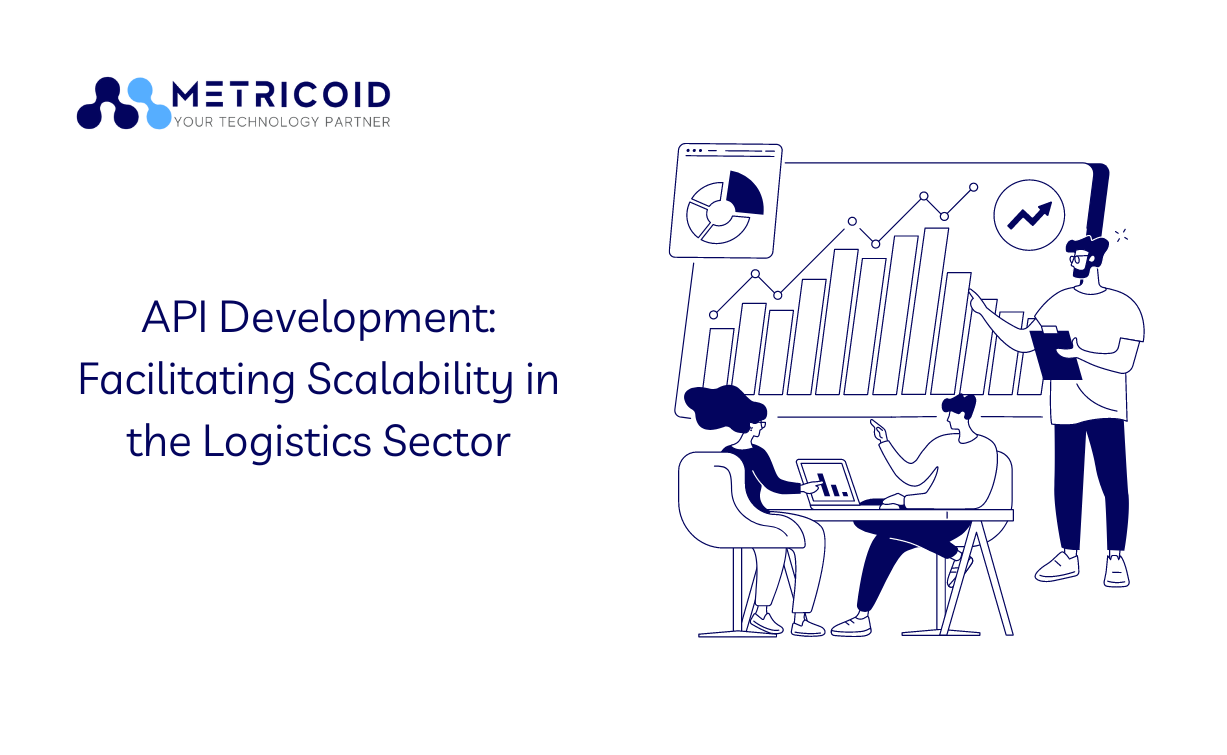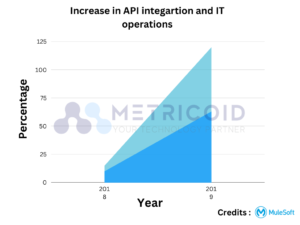Exploring the Benefits of API Integration in Logistics Automation

Companies throughout the world are seeing the promise of automation in simplifying operations, particularly in the logistics industry, as we traverse an ever-changing digital landscape. The worldwide logistics market was estimated at $4.6 trillion in 2021, with a 6.5% CAGR expected through 2028. The powerful role of Application Programming Interface (API) integration, a fundamental driver of logistics automation, is central to this exceptional rise.
Table Of Contents
A New Era of Automation with API Integration
APIs, in essence, operate as the ‘glue’ that connects various software programmes, allowing them to communicate and share data in real time. This crucial feature is especially useful in the logistics industry, as companies handle complicated supply chains with various touchpoints.
Logistics automation boosts operational efficiency by automating manual operations including inventory management, route planning, and order processing. APIs provide more informed decision-making, optimize resource allocation, and ultimately improve the customer experience through real-time data interchange.
Boosting Efficiency, Reducing Errors
The value of API integration resides in its potential to simplify processes, decreasing the amount of time spent on manual data entry and lowering the chance of human mistake. It may connect a company’s Transport Management System (TMS) directly to carrier databases, instantly updating cargo information and improving tracking and reporting accuracy.
According to a 2019 MuleSoft survey, firms who use APIs see a 63% boost in application integration and a 57% gain in IT operational efficiency. These findings show APIs’ disruptive influence in logistics, emphasizing their critical role in supporting more automated, efficient, and error-free processes.

Enabling Real-Time Visibility and Decision-Making
APIs play a central role in real-time tracking, a critical feature for modern logistics operations. With real-time data exchange, businesses can track shipments in transit, anticipate delays, and adjust plans accordingly – all in real-time. This real-time visibility not only enhances operational transparency but also enables proactive decision-making, optimizing performance, and customer satisfaction.
Power of API Integration in Dynamic Routing
API integration not only streamlines operations and enables real-time decision making, but it also provides dynamic routing capabilities in logistics automation. APIs enable logistic organizations to re-route deliveries swiftly and effectively depending on real-time data such as traffic conditions, truck availability, or last-minute order modifications.
Scalability and Expansion Opportunities
Additionally, API connectivity allows for scalability and business development. As logistics organizations expand, so do the quantity of orders, suppliers, and partners. APIs allow new partners and providers to be seamlessly integrated into current systems, decreasing the time to market for new routes and services.
With API connectivity, businesses can handle more orders and shipments without requiring extensive manual involvement. Thus, APIs not only aid in the management of the current but also in the scalability for future expansion.
Creating Agile Supply Chains
API integration in logistics automation further equips businesses with the tools to create more agile supply chains. By connecting various elements of the supply chain through APIs, businesses can respond to disruptions and changes in the market much more quickly. For instance, if there is a sudden increase in demand for a particular product, businesses can use APIs to quickly adjust their logistics processes to meet this demand.
Improved Inventory Management
Another notable benefit of API integration is improved inventory management. With APIs, businesses can sync their logistics systems with their inventory management systems. This allows for real-time updates on inventory levels, reducing the chances of stock-outs or overstocks. It also helps businesses make informed decisions about when to reorder stock, how much to order, and which warehouse to store it in.
Real-Time Analytics and Insights
Finally, API connectivity allows for real-time analytics and insights. Businesses may receive a real-time perspective of their logistics operations by linking logistics systems with analytics tools via APIs. This contains information on delivery performance, transportation costs, and levels of customer satisfaction. Businesses may make better informed decisions and constantly improve their logistics systems with such information at their fingertips.
Final Thoughts: Embracing the API-Driven Future of Logistics
The logistics industry is in the throes of a digital revolution, driven by the adoption of sophisticated technology tools. Among these, API integration stands out as a powerful enabler of automation, bridging the gap between disparate systems and driving a more interconnected, efficient, and transparent logistics ecosystem.
As we investigate APIs’ latent potential, it becomes evident that firms who want to stay ahead of the digital curve must adopt this technology. It’s time to acknowledge the enormous value that API integration provides to logistics automation, altering operations, and laying the groundwork for long-term, scalable development.
In summary, API integration in logistics automation provides several benefits, including operational transformation, improved customer experience, scalability, and useful data. It is a true game changer in the field of logistics management.






